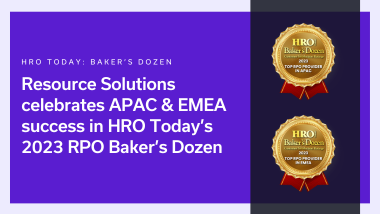5 signs of a toxic workplace culture and how to address it

A toxic workplace culture is not always evident and often occurs insidiously in the background. Keep an eye out for these five signs of toxicity, plus follow our tips for combatting a negative work environment.
Recent research indicates that bullying in the workplace has surged in the age of hybrid-remote working. In the UK, from 2021–22, employment tribunals sharply increased, with cases of bullying allegations up by 44%. Examples included patterns of bullying that are hard to identify, like excluding colleagues from remote meetings, gossiping on messaging apps, and making cutting remarks on video calls that are hard to address.
More than anything, these findings underscore the power and resilience of toxicity. It doesn’t need a physical setting to manifest and consume a company culture. Employers and HR teams must take this risk seriously, but employees can also play their part in recognising and reporting inappropriate behaviour.
Here are five signs of toxicity to look out for – both in the physical and virtual workplace – plus five ways to combat it.
1. Lack of communication
Negative or poor communication is an issue for any organisation and a key indicator of a toxic culture. Conflicting information, a lack of clarity on projects, and no positive feedback or recognition causes problems for employees who can become confused and develop a lack of purpose.
2. Poor leadership
There are many types of bad leadership, and all contribute to a dysfunctional culture. There’s the narcissistic leader, who demands agreement and perfection. Or the micro-manager who continually corrects and undermines their team. Or the deflector, who always finds someone to blame for issues that occur and rarely reflects on the role they themselves must play in overseeing and optimising procedures.
3. Burnout and no work-life balance
A workplace where employees are expected to be relentlessly productive, and are not encouraged to develop healthy boundaries with work, can be considered toxic. Long hours and high levels of stress from a negative culture leads to burnout, fatigue and illness. If employees are regularly booking sick days or working while unwell, this is a clear sign of toxicity.
4. Exclusion, cliques, and gossip
Groups or cliques at work that exclude other employees create an uncomfortable workplace. These cliques tend to chat on messaging platforms or whisper to each other in the office, motivated by drama and gossip. Employees are isolated and, in some cases, work is offered to particular individuals or groups regardless of skills or experience.
5. High turnover of employees
A workplace with a rapid turnover of employees is an indication of unrest and dissatisfaction within an organisation. It’s often the elements of the toxic culture that drive people to make the decision to leave and overall, a lack of direction, leadership, and opportunity.
If you spot any of these signs in your workplace, here are some ways to address a toxic culture. By adopting new ways of working and coping strategies, these can help to relieve stress and potentially improve your working environment.
1. Connect with people who feel the same
Seek out and develop friendships with other employees who have similar experiences to you. Building a network of trusted colleagues enables you to support each other and speak freely about issues and discuss ways to handle the toxic atmosphere.
2. Practice self-care and set healthy boundaries
Doing something for yourself after work or taking up a new hobby can help to relieve stress. It’s important to establish some boundaries so you don’t take the stresses of work home with you. For example, turn off your work phone as you leave the office, shut down your work computer, and ignore all emails and correspondence outside of work hours.
3. Build a schedule and be organised
In a toxic workplace, it’s easy to become confused and lose sight of priorities. Using lists or developing a plan of tasks can help to take your mind away from the negative environment, so you can focus on the goals that matter to you. Continuing to achieve targets can give you a sense of purpose, despite the toxicity around you.
4. Document issues and keep a paper trail
Keeping a record of communications and issues is important in a toxic workplace. This will be helpful if you need to make a complaint to justify your position on a particular issue. Sending follow-up emails to meetings and sharing minutes gives visibility to discussions and actions, ensuring everyone is accountable.
5. Plan to leave
If the volatile workplace continually causes you stress and your coping strategies have failed to improve the situation, then it’s time to plan your exit. Decide on what you would like to move onto and ensure you find a new position before you leave your current job. Planning the steps to secure a new role will keep you focused – connect with your network, update your social media profiles, contact relevant recruitment agencies, and update your CV with your achievements.












